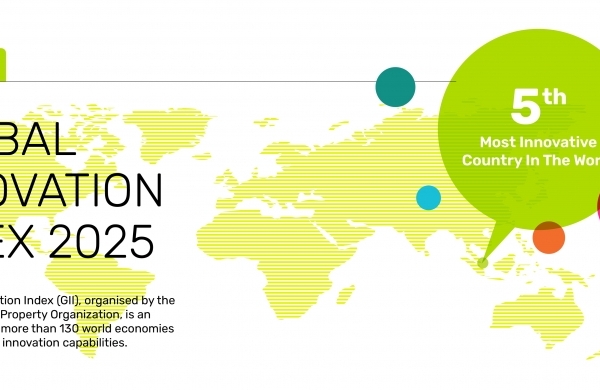Did not receive verification mail? Please confirm whether the mailbox is correct or not Re send mail

IPR Daily
- 2025-06-20 17:59:22
Patent Case Summaries | Week Ending June 13, 2025
Fraunhofer-Gesellschaft zur Förderung der angewandten Forschung e.V. v. Sirius XM Radio Inc., No. 2023-2267 (Fed. Cir. (D. Del.) June 9, 2025). Opinion by Lourie, joined by Dyk and Reyna.
From 1998 to 2010, Fraunhofer collaborated with Sirius XM to build the “XM DARS System.” Years later, in 2015, Fraunhofer notified Sirius XM that it believed the XM DARS System was infringing four Fraunhofer patents related to satellite radio technologies. Fraunhofer then filed a complaint for infringement.
At the summary judgment stage, Sirius XM argued that Fraunhofer’s infringement claims were barred by equitable estoppel. The district court agreed and granted summary judgment, reasoning that Fraunhofer’s multi-year silence following close collaboration with Sirius XM in developing the XM DARS System constituted misleading conduct, that Sirius XM relied on the misleading conduct, and that Sirius XM suffered prejudice. Fraunhofer appealed.
The Federal Circuit reversed. To start, the Federal Circuit agreed with the district court’s conclusion that “Fraunhofer’s more-than-five-year silence in asserting infringement, in light of its clear knowledge of that infringement, rose to the level of misleading conduct.” But the Federal Circuit concluded that Sirius XM failed to “establish through undisputed evidence that it relied on Fraunhofer’s misleading conduct.”
The court explained that Sirius XM must establish “that it at least considered Fraunhofer’s silence or inaction and that such consideration influenced its decision to migrate to the accused high-band system.” However, Sirius XM executives had testified that the impetus for its pursuit of the accused system was business considerations, not because Sirius XM had taken Fraunhofer’s silence as acquiescence. The Federal Circuit thus ruled that summary judgment was improper.
As to the final requirement of equitable estoppel—prejudice—the Federal Circuit explained that Sirius XM “must establish that there is a nexus between the alleged prejudice and its reliance on Fraunhofer’s misleading conduct.” Sirius XM did not establish prejudice because it had not established reliance, but the Federal Circuit stated that “if [Sirius XM] can establish at trial that it relied on Fraunhofer’s misleading conduct …, then there is no genuine dispute of material fact that [Sirius XM] was prejudiced by that reliance.”
The Federal Circuit therefore reversed and remanded the district court’s grant of summary judgment based on equitable estoppel.
View Opinion
Agilent Technologies, Inc. v. Synthego Corp., Nos. 2023-2186, -2187 (Fed. Cir. (PTAB) June 11, 2025). Opinion by Prost, joined by Linn and Reyna.
Synthego filed IPR petitions challenging the validity of two Agilent patents related to CRISPR-Cas systems for gene editing. The Patent Trial and Appeal Board found all challenged claims invalid as anticipated by “Pioneer Hi-Bred” or invalid as obvious based on Pioneer Hi-Bred in combination with other references. Agilent appealed, raising three issues—anticipation, enablement, and obviousness.
The Federal Circuit affirmed. As to anticipation, the Board found that Pioneer Hi-Bred discloses the claimed gRNA functionality. The court summarized key aspects of the Board’s decision and several statements in Pioneer Hi-Bred disclosing the pertinent functionality, and concluded that “the disclosure of some non-working examples in Pioneer Hi-Bred does not undermine the disclosure of other examples that were disclosed as functional.” Ultimately, the court ruled that substantial evidence supported the Board’s determination of anticipation.
Next, addressing whether Pioneer Hi-Bred is enabling, the Federal Circuit reviewed the Board’s decision and the pertinent disclosures in Pioneer Hi-Bred and again concluded that substantial evidence supported the Board’s determination. The court distinguished its Impax decision as well as the Supreme Court’s Amgen decision, both of which Agilent had urged as analogous.
Finally, as to obviousness of certain dependent claims, the Federal Circuit rejected both of Agilent’s arguments—that Pioneer Hi-Bred does not disclose the pertinent functionality and that the Board failed to explain its reasonable-expectation-of-success finding. The Federal Circuit found neither argument persuasive and ruled that substantial evidence supported the Board’s findings. Thus, the Federal Circuit affirmed the Board’s determinations of unpatentability.
View Opinion
United Services Automobile Association v. PNC Bank N.A., Nos. 2023-1639, -1866, 2025-1276, -1341 (Fed. Cir. (E.D. Tex.) June 12, 2025). Opinion by Hughes, joined by Dyk and Clevenger.
USAA sued PNC for infringement of three patents related to image processing technology for mobile check deposits. After discovery, both parties filed summary judgment motions on whether the asserted claims were patent eligible under 35 U.S.C. § 101. The district court granted summary judgment for USAA, concluding that the asserted claims were patent eligible because they are not directed to an abstract idea.
The district court then conducted a jury trial, and the jury found infringement by PNC and no invalidity of the asserted claims. The court then entered final judgment, and PNC appealed the summary judgment ruling on § 101, focusing on the lone asserted claim in one of the patents-in-suit. USAA cross-appealed as to the alleged admission of improper expert testimony on damages.
The Federal Circuit reversed, concluding that the asserted claim is directed to an abstract idea and does not contain an inventive concept. The claim at issue is directed to “a system for allowing a customer to deposit a check using a customer’s handheld mobile device.” Addressing Alice step one, the Federal Circuit determined that the required processes “are routine processes implemented by a general-purpose device (e.g., a handheld mobile device) in a conventional way.” The court explained that it has “repeatedly held that mere computer-based implementation, without more, is not sufficient to render claims directed to patent-eligible subject matter at step one.” The court also noted that adding a handheld mobile device to carry out the routine steps “does not make the claim any less abstract.”
Turning to Alice step two, the Federal Circuit concluded there was no inventive concept to support patent eligibility. The court said that its “precedent is clear that computer-mediated implementation of routine or conventional activity is not enough to provide an inventive concept.” The claim at issue “recites nothing more than routine image capture, OCR, and data processing steps—all of which were well known and routine.” Thus, instead of any inventive concept, the claim covered “only the implementation of routine activities using a generic device.”
Thus, the Federal Circuit reversed the grant of summary judgment on patent eligibility and did not reach USAA’s cross appeal, as there were “no longer any valid patents to support the jury verdict.”
View Opinion
Mitek Systems, Inc. v. United Services Automobile Association, No. 2023-1687 (Fed. Cir. (E.D. Tex.) June 12, 2025). Opinion by Chen, joined by Taranto and Schall.
Mitek filed a declaratory judgment action of noninfringement against USAA concerning four patents related to mobile check deposits. The district court determined that it lacked subject matter jurisdiction over Mitek’s action, and, even if jurisdiction existed, it would exercise its discretion to decline jurisdiction. Mitek appealed.
On appeal, Mitek raised two jurisdictional bases for its declaratory judgment action: potential liability for infringement and potential indemnification liability.
As to Mitek’s potential liability for infringement, the Federal Circuit addressed direct, induced, and contributory infringement but found that none supported jurisdiction. There was no potential liability for direct infringement because Mitek’s “MiSnap” mobile check-deposit software “is not capable of satisfying certain hardware-related limitations in the asserted claims.” Also, there was no potential liability for induced infringement because in USAA’s other litigations, relied on by Mitek, USAA “never alleged that MiSnap meets every element of every asserted claim and has never cited to Mitek documentation in its claim charts as evidence of infringement of every element of every asserted claim.” Lastly, there was no potential liability for contributory infringement because there was never a suggestion that MiSnap is not suitable for substantial noninfringing uses. “In fact, USAA has expressly said the opposite—i.e., that MiSnap has several substantial noninfringing uses.”
The Federal Circuit also rejected Mitek’s argument that potential indemnification liability supported jurisdiction. The court agreed with the district court that “Mitek could not have reasonably believed it would be subject to indemnification liability.” For example, certain indemnity agreements that Mitek relied on included carveouts that excluded end-user banks, which were the targets of USAA’s enforcement efforts.
Lastly, the Federal Circuit saw no abuse of discretion in the district court’s alternative discretionary dismissal. Thus, the court affirmed the dismissal of Mitek’s declaratory judgment action.
Source: www.jdsupra.com
- I also said the two sentence
- Also you can enter 140words
 TOP IPR U.S. Lawyers 10 & Firms 10 Selection Officially Launched by IPR Daily
TOP IPR U.S. Lawyers 10 & Firms 10 Selection Officially Launched by IPR Daily WIPO Global Innovation Index 2025: China Enters Top 10
WIPO Global Innovation Index 2025: China Enters Top 10 Singapore ranks 5th in the 2025 Global Innovation Index; climbed two spots in Innovation Outputs
Singapore ranks 5th in the 2025 Global Innovation Index; climbed two spots in Innovation Outputs Federal Circuit lacks jurisdiction over award that doesn’t raise issue of patent law
Federal Circuit lacks jurisdiction over award that doesn’t raise issue of patent law


